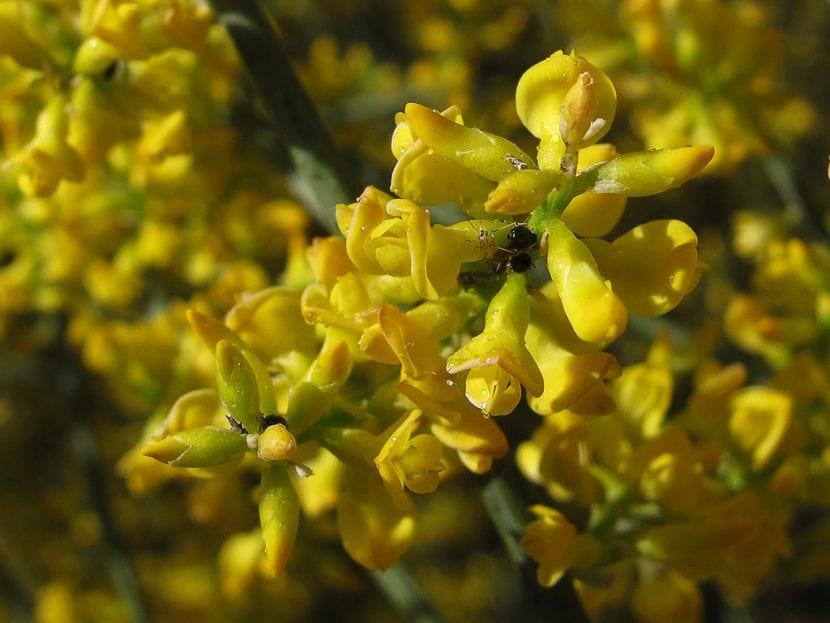
Image - Flickr / jacinta lluch valero
La Broom sphaerocarpa it is easy to distinguish by its linear leaves and, above all, by the quantity of yellow flowers it produces. It produces so many that it can give you the impression that it is a plant that only has a trunk and a lot of petals, which are very attractive to insects as beneficial as bees.
To all this we must add that resists drought very well, but also extreme heat and frost.
Origin and characteristics
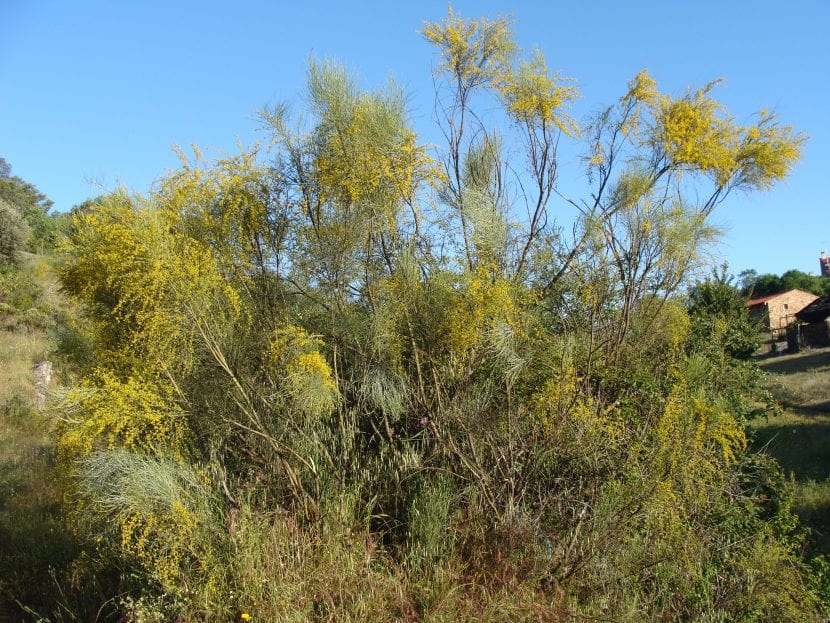
Image - Wikimedia / Drow_male
It is a shrub that reaches a maximum height of 3 meters, rarely 4, native to southwestern Africa and much of the Iberian Peninsula, including Portugal. It is popularly known as yellow broom, flowering broom, common broom, ball broom, broom, tall broom or giniestra.
It grows at altitudes between 0 and 400 meters above sea level, and is characterized by being a plant that may or may not have leaves, and if they do, we will see that they are linear, lanceolate in shape, and greenish-bluish in color.
The flowers are papaleonaceous, composed of a 2 to 3,5mm calyx, bilabiate, with the upper lip bifid, and the lower one divided into 3 parts. The fruit is an ovoid legume, brownish in color. It blooms in spring-summer, and bears fruit towards the end of summer / beginning of autumn depending on the benevolence of the climate.
What is the care of the Retama sphaerocarpa?
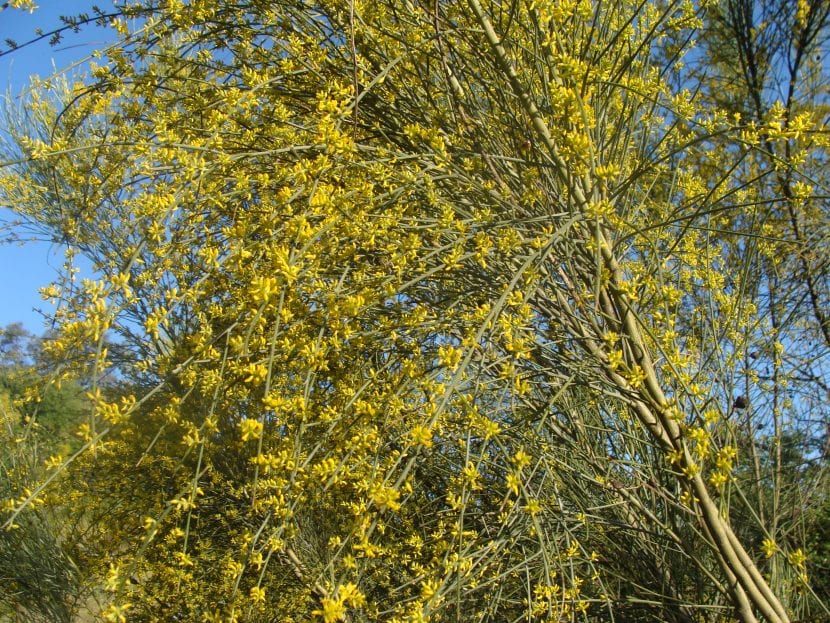
Image - Wikimedia / Drow_male
Would you like to have a copy? If so, we recommend taking care of it as follows:
Location
The yellow broom is a shrub that has to be abroad, in an area where the sun shines directly, if possible throughout the day.
Although it is a relatively small plant, it is very important that you keep in mind that its roots, although they are not invasive, can extend several meters. Therefore, if you are going to have it on the ground, plant it at a distance of at least 5 meters from other tall species.
Earth
It depends:
- Garden: prefers siliceous or limestone soils, with good drainage.
- Flower pot: you can use substrates with a pH of 6.5 to 7.5, such as the universal one (on sale here).
Irrigation
As we said, it is a very resistant plant to drought. But that does not mean that it should never be watered. During the hottest and driest season of the year you will appreciate one or two irrigations per week, while the rest of the seasons with one a week or even every ten days in winter in the event that it rains regularly could have enough.
In the event that you have it on the ground, and it rains a minimum of 400mm per year, from the second spring that it is in your garden you can gradually space out the waterings little by little, until there comes a time when which will not be necessary to water it.
Subscriber
In spring and summer It is advisable to fertilize, since in this way it will have good growth and better development. What fertilizers to use? Well, there are many types, but the ideal is to use those that are beneficial both for the plant that you are going to fertilize and for the soil; Or in other words, that they are ecological, natural.
These can come in granules, powders or liquids. For the plant that is in the ground, all three can be used, but if it is in a pot from experience it is highly advisable to use only the liquids, since this way the drainage of the substrate will not be modified.
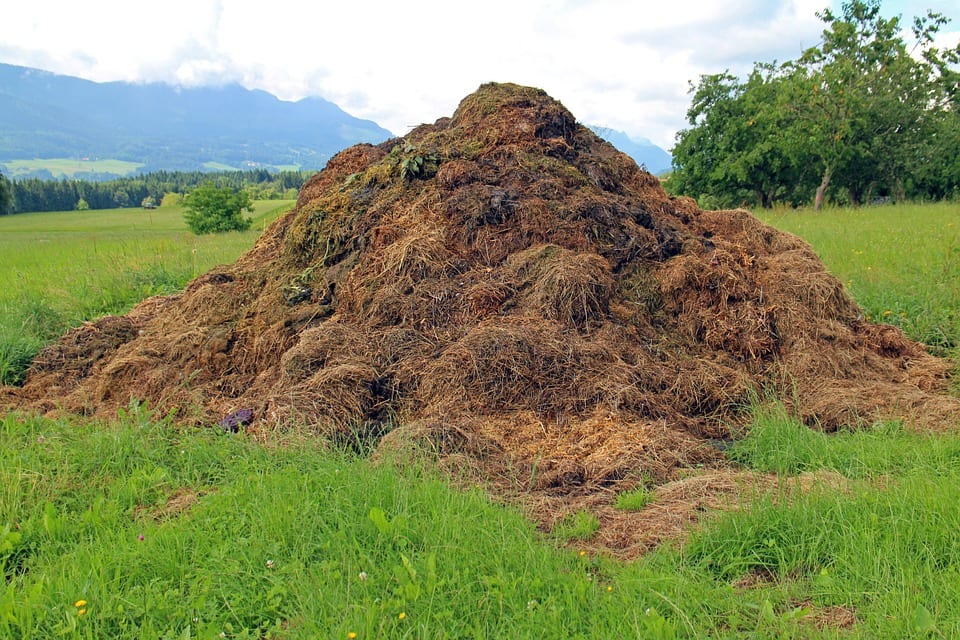
Multiplication
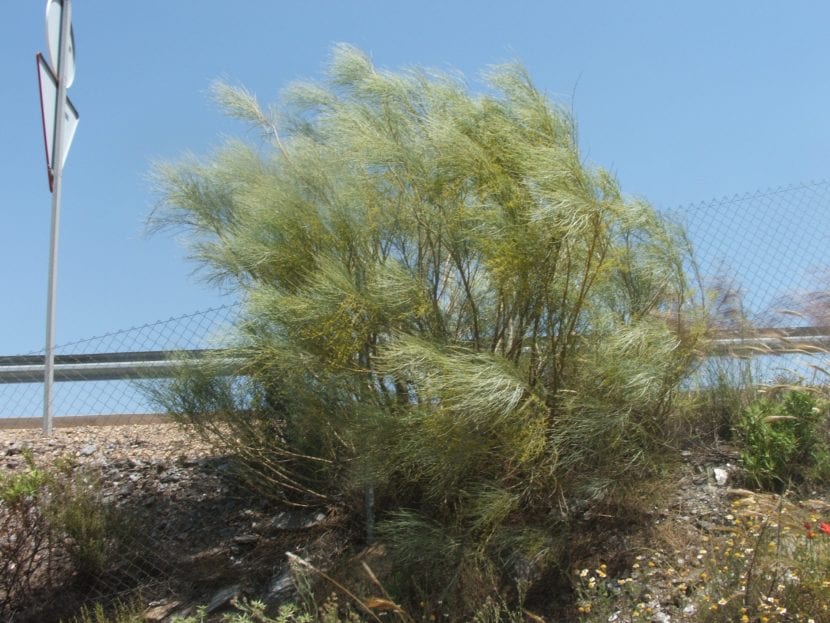
La Broom sphaerocarpa multiplied by seeds, following this step by step:
- First, they are placed in a glass of water and left for 24 hours.
- The next day, those that remain floating are discarded, since it is almost certain that they will not germinate (although you can sow them in a separate seedbed, just in case).
- Afterwards, a seedling tray is filled (for sale here) with universal growing substrate.
- Next, a maximum of two seeds are sown in each socket.
- Then they are covered with a thin layer of substrate.
- Finally, it is watered thoroughly and the seedbed is placed outside, in full sun.
The seeds will germinate in a week or two, keeping the substrate always moist.
Plagues and diseases
Does not have. If the mushrooms are watered excessively, their roots will rot, but it is difficult for that to happen by watering it once a week or that 🙂.
Planting or transplanting time
If you want to have one Broom sphaerocarpa in your garden, you must plant it at the end of winter or, if the weather is mild and / or with weak frosts, in autumn.
On the other hand, if you have it in a pot, transfer it to a larger one every two years.
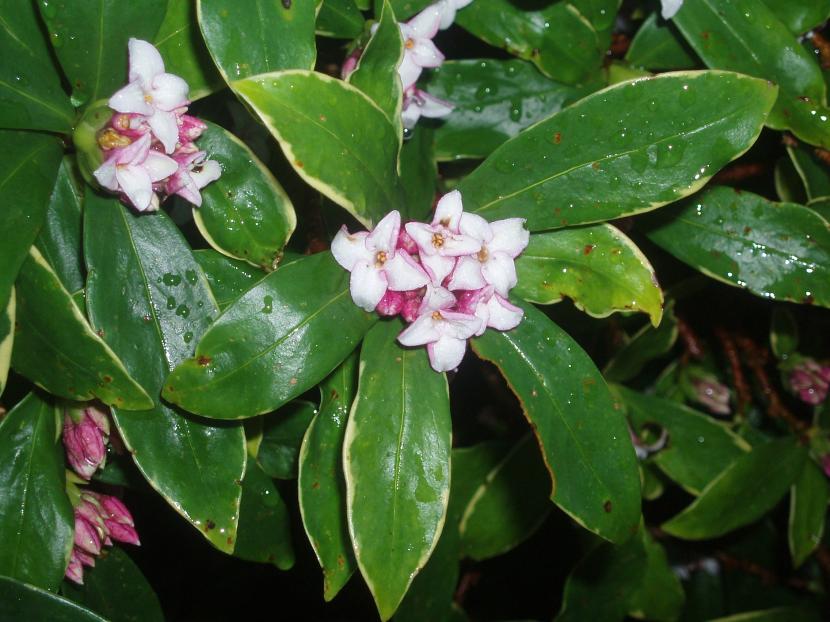
Pruning
You don't really need it, but it is advisable to remove dry, diseased, broken or weak branches in late winter.
Rusticity
It resists frosts of up to -7ºC.
What is?
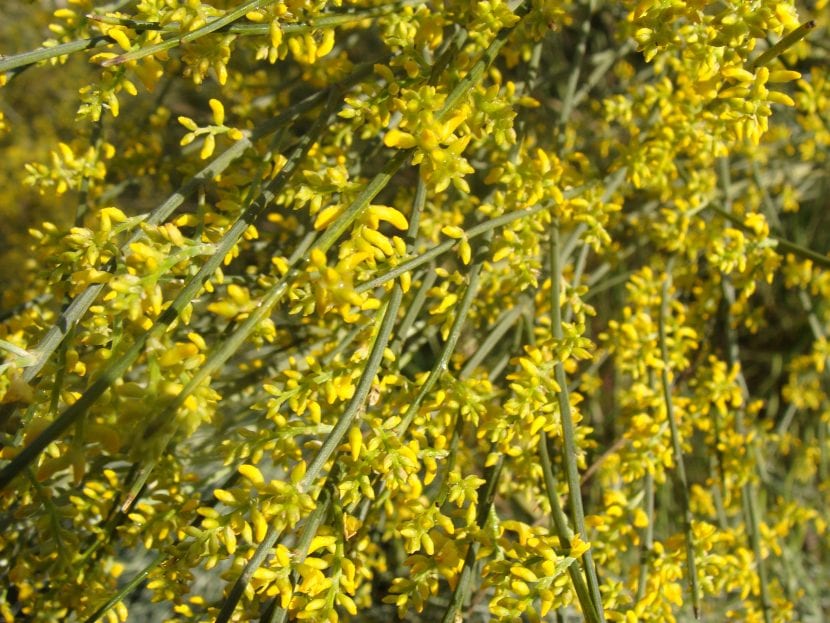
Image - Wikimedia / Drow_male
Ornamental
It is a bush of great beauty, ideal to have as an isolated specimen, in groups or alignments. It can even be grown in a pot! Without a doubt, it is one of the most interesting species.
Medicinal
It is used to treat respiratory diseases, as well as fever.
Other uses
In a traditional way in Galicia (Spain) it has been used to make sweeping brooms with them.
What did you think of Broom sphaerocarpa?